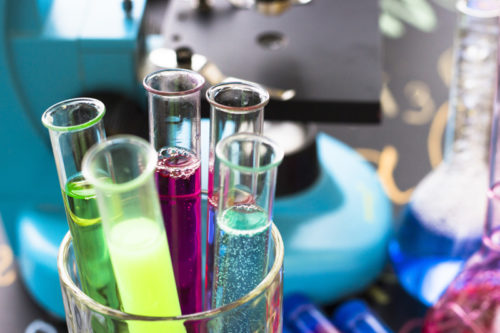
Lower Secondary Chemistry
PROGRAMME COVERAGE

Diversity of Matter
- Establish a link between the materials used in common items to their physical properties such as density and electrical conductivity.
- Use appropriate apparatus to measure accurately length, volume and mass.
- Distinguish among elements, compounds and mixtures based on its definition and properties and draw their atomic models.
- Differentiate solute, solvent, solution from suspension.
- Classify elements as metals and non-metals based on their physical properties.
- Analyse the factors that affect the solubility and rate of dissolving of substances.
- Discuss how the disposal of harmful substances can impact the environment negatively.
Separation Techniques
- Master the following separation techniques: magnetic attraction, filtration, evaporation, distillation and paper chromatography.
- Recognise which separation techniques to be appropriately used given the context of the question.
- State real-life examples of the use of separation techniques and its importance.
Atoms, Molecules and Ions
- Describe the structure of an atom and ions using the properties of sub-atomic particles.
- State that atom of an element have a unique number of protons, hence the element can be determined with the use of periodic table.
- Compare atom and molecules and identify them from given atomic models.
- State the number and types of atoms in a compound.
Chemical Changes
- Identify examples of chemical change such as combustion, thermal decomposition, oxidation and neutralisation which leads to formation of new products.
- Observe that chemical reactions involve a rearrangement of atoms, which are not created or destroyed.
- Use word equations to represent chemical reactions.
- Forms chemical formulae of compounds and basic chemical equations.
- Identify types of bonding and draw dot-and-cross diagrams.


